
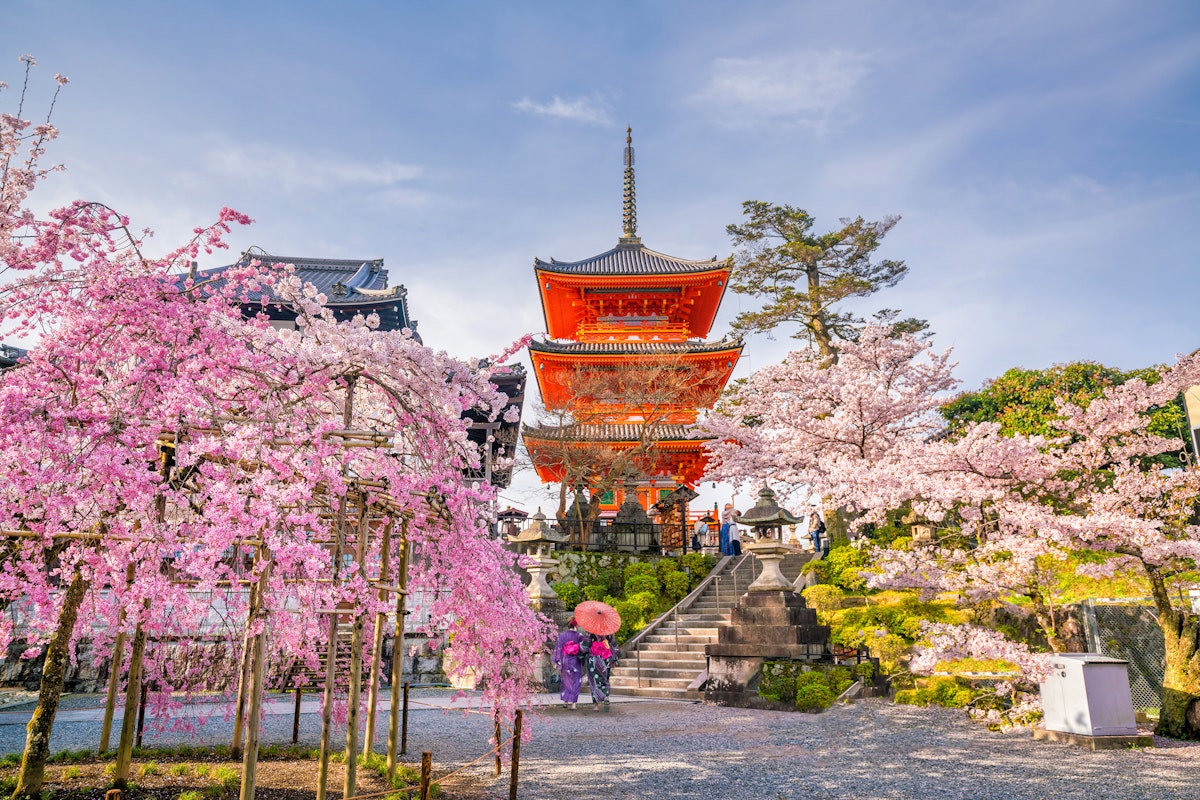
Spring in Japan is a magical time of the year. It is when cherry blossoms, known as "sakura" in Japanese, bloom all over the country. This season attracts millions of visitors who want to experience the breathtaking beauty of the pink and white petals.
The sakura season is not just about flowers; it is a time of celebration, tradition, and joy. In this guide, we will explore the best places to see cherry blossoms, festivals to attend, and tips for making the most of your spring trip to Japan.
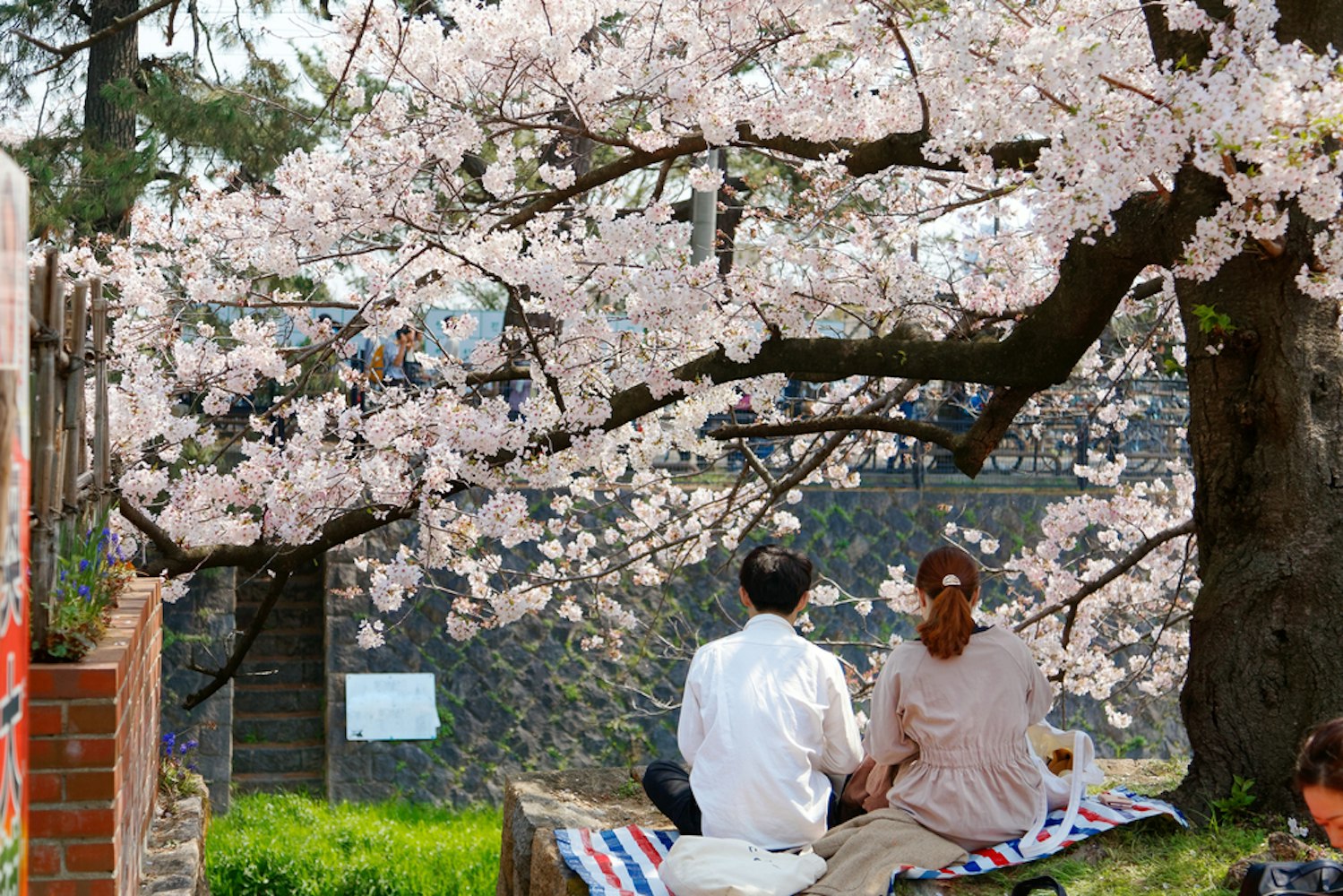
Cherry blossom season varies depending on the location. The blooms start in the southern part of Japan and gradually move north. Here is a general timeline:
Okinawa – Late January to early February
Kyushu (Fukuoka, Nagasaki, Kumamoto) – Mid to late March
Shikoku (Takamatsu, Matsuyama) – Late March to early April
Honshu (Tokyo, Kyoto, Osaka, Hiroshima) – Late March to early April
Tohoku (Sendai, Aomori, Akita) – Early to mid-April
Hokkaido (Sapporo, Hakodate) – Late April to early May
It is best to check the cherry blossom forecast before your trip since blooming times can vary slightly each year due to weather conditions.
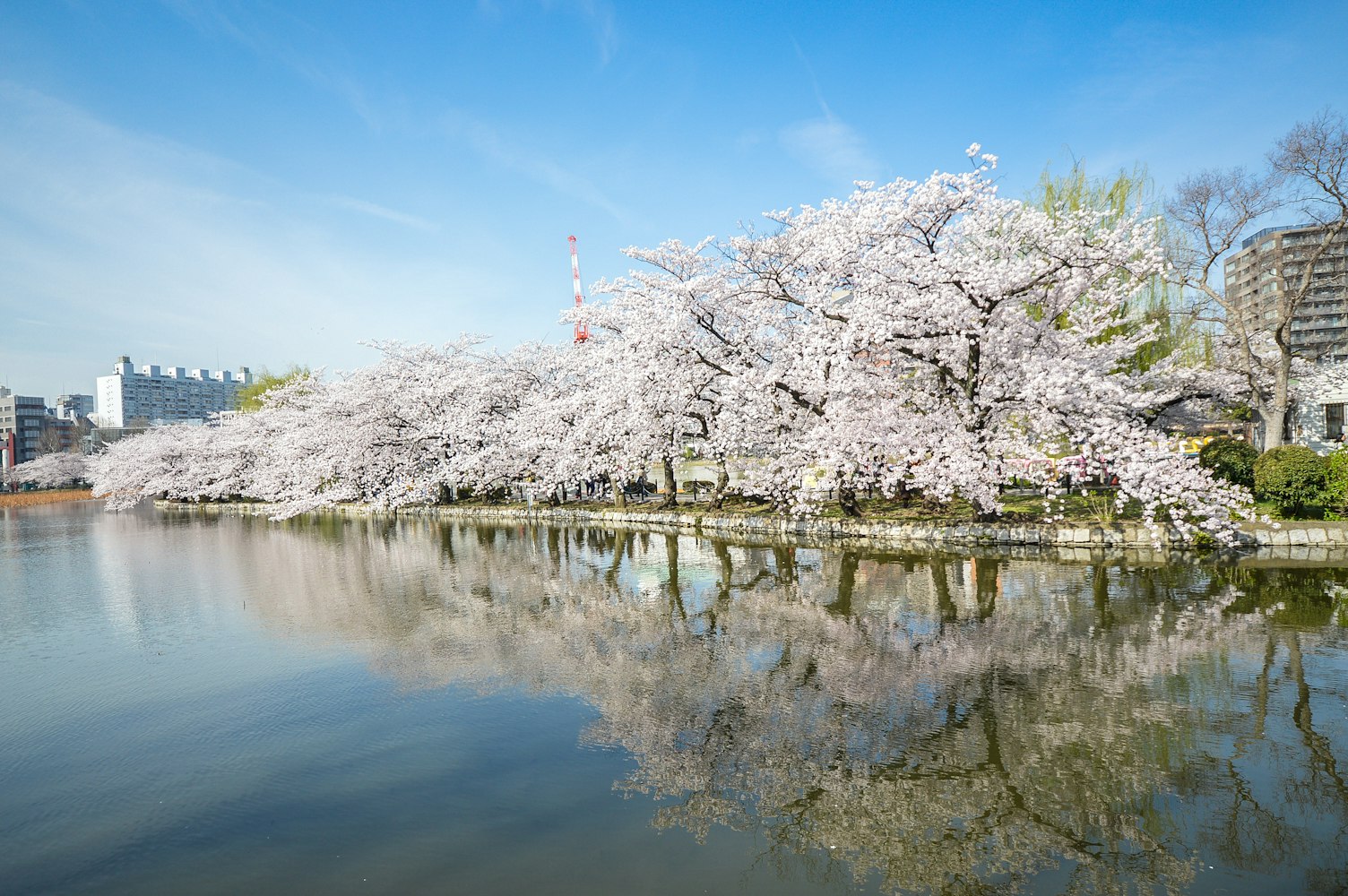
Tokyo has many great places to see cherry blossoms, but Ueno Park is one of the most famous. It has over 1,000 cherry trees that bloom beautifully in spring. During sakura season, many people visit the park to enjoy hanami (flower viewing).
Families and friends gather under the trees for picnics, eating delicious food while admiring the pink blossoms. The park also has food stalls selling tasty treats like yakitori (grilled chicken skewers) and sakura-themed snacks.
Another beautiful spot in Tokyo is Shinjuku Gyoen, a large park with different types of cherry trees. Because there are early and late-blooming varieties, the cherry blossom season lasts longer here than in other places. The park is peaceful, making it a great place for a quiet walk or a relaxing picnic.
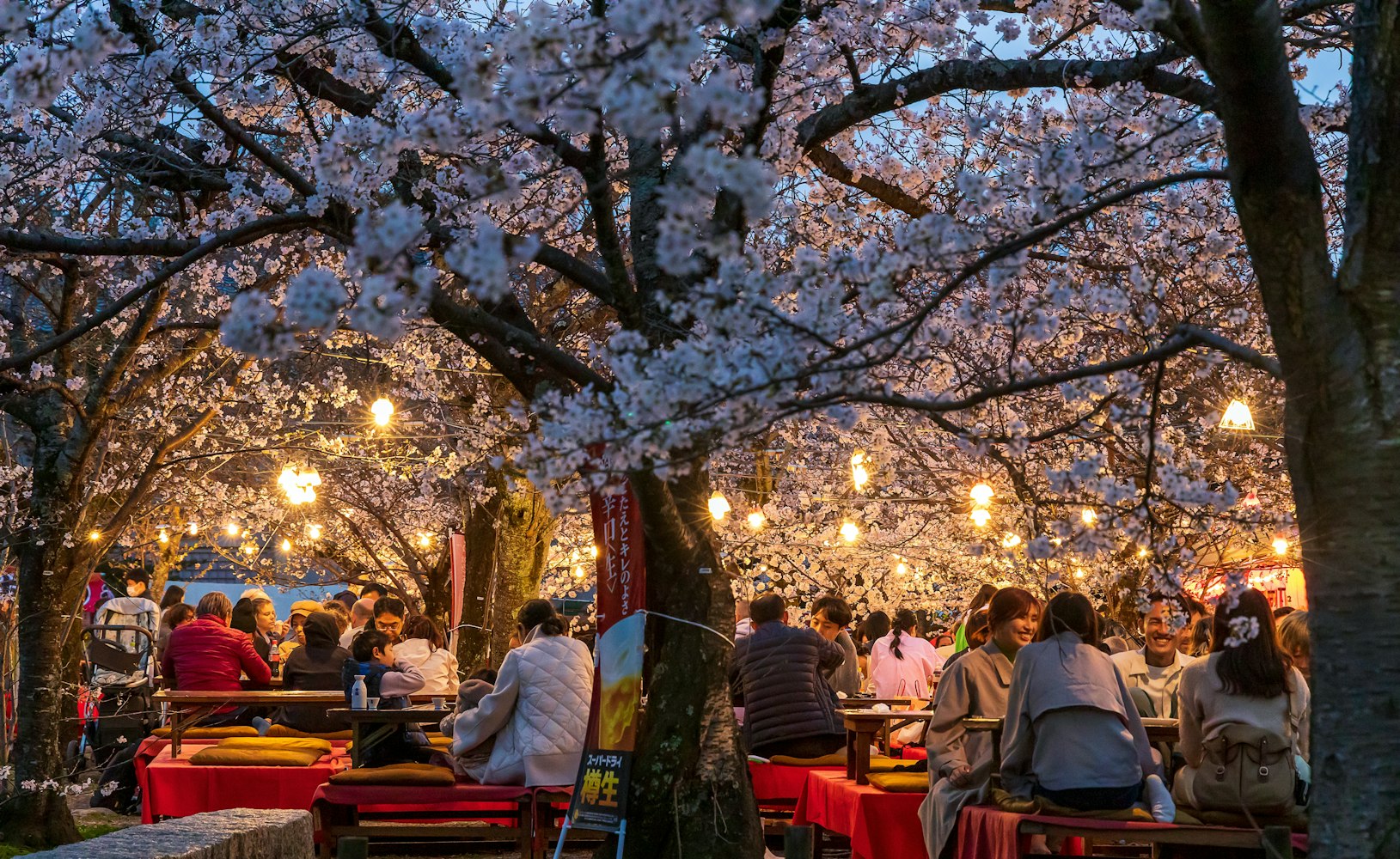
Kyoto is known for its traditional charm, and in spring, cherry blossoms make it even more beautiful. Maruyama Park is the most famous sakura spot in Kyoto. It is home to a huge weeping cherry tree, which is illuminated at night, creating a magical atmosphere. Many visitors enjoy sitting under the trees with bento boxes while admiring the stunning view.
Another wonderful place to see cherry blossoms in Kyoto is the Philosopher’s Path. This is a peaceful walkway that follows a canal lined with hundreds of cherry trees.
As you stroll along the path, you can see pink petals floating in the water, creating a dreamy scene. The area is also home to many small temples and cafes where you can take a break and enjoy the season.
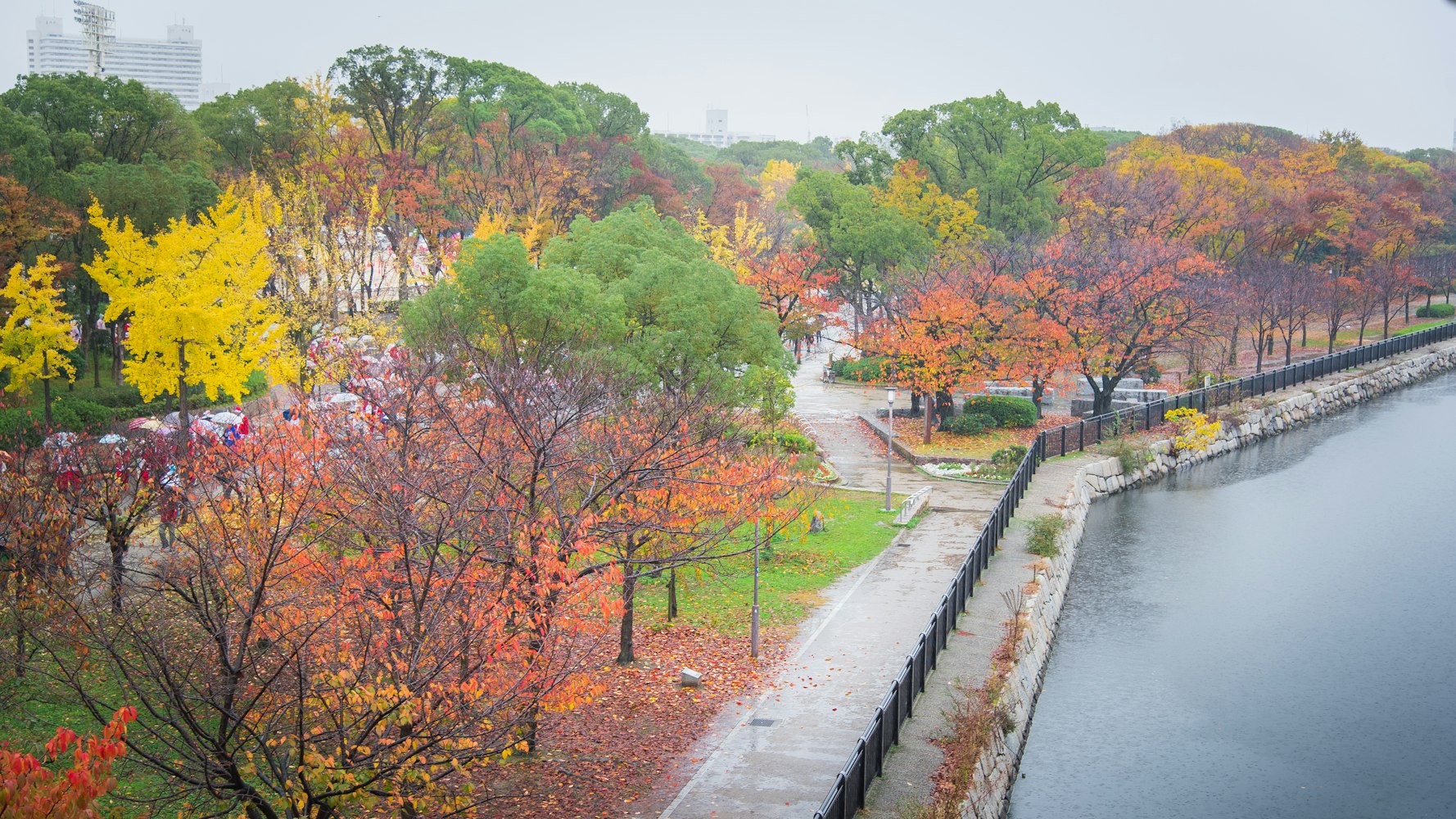
Osaka Castle is one of Japan’s most famous landmarks, and during Sakura season, it becomes even more stunning. Osaka Castle Park has about 3,000 cherry trees, creating a breathtaking sight when they are in full bloom.
The combination of the historic castle and pink cherry blossoms makes it a popular spot for both tourists and locals. People gather in the park to enjoy hanami, take photos, and admire the view.
There are also food stalls where you can try Japanese street food, such as takoyaki (octopus balls) and taiyaki (fish-shaped pastries filled with sweet red bean paste).
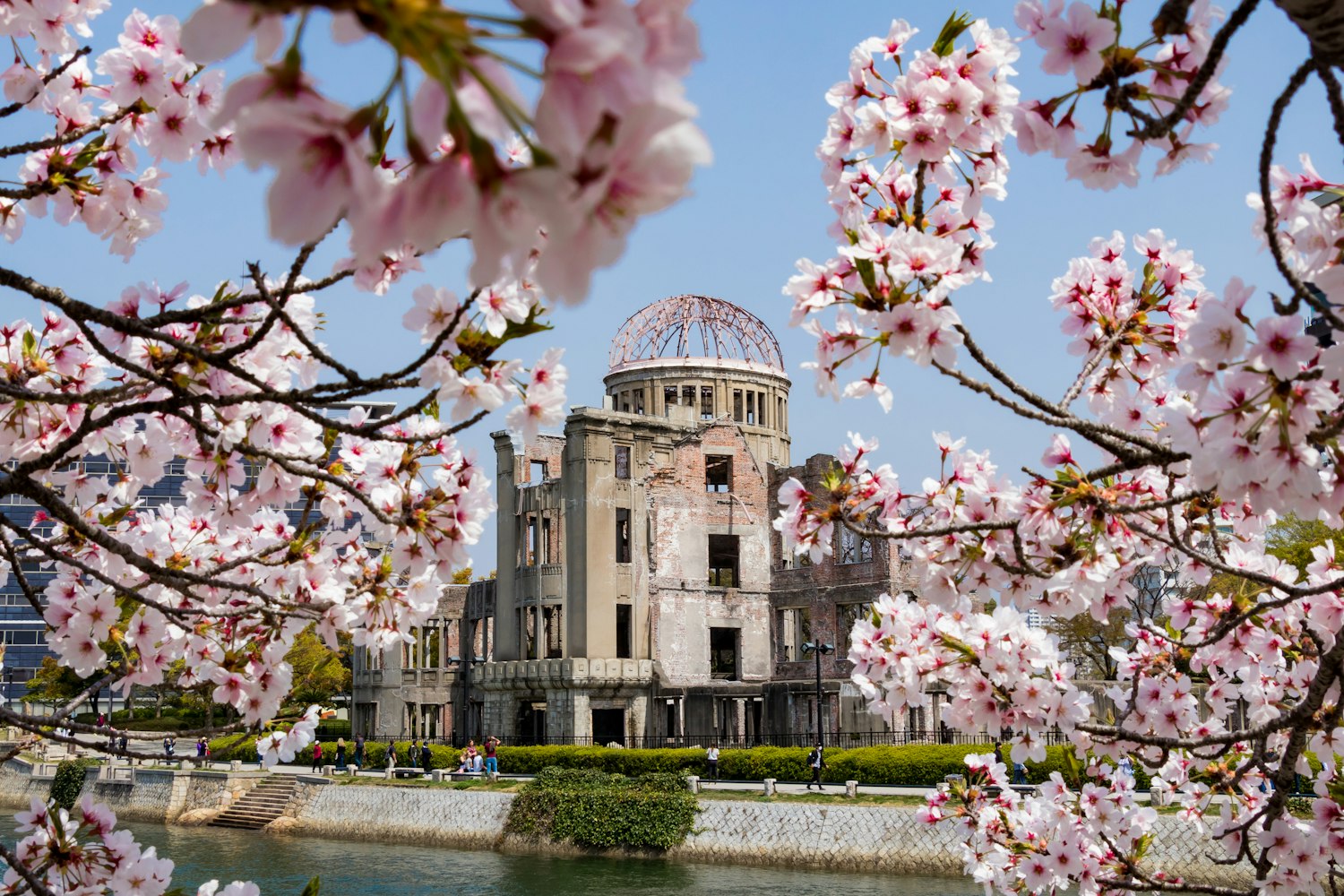
Hiroshima’s Peace Memorial Park is an important historical site, and during cherry blossom season, it becomes a place of great beauty. The park has hundreds of cherry trees that bloom in soft pink, creating a contrast with the deep history of the area.
Many visitors come here to reflect on the past while enjoying the peaceful scenery. The nearby Hiroshima Castle is also a fantastic place to see cherry blossoms, as it is surrounded by beautiful sakura trees and a moat.
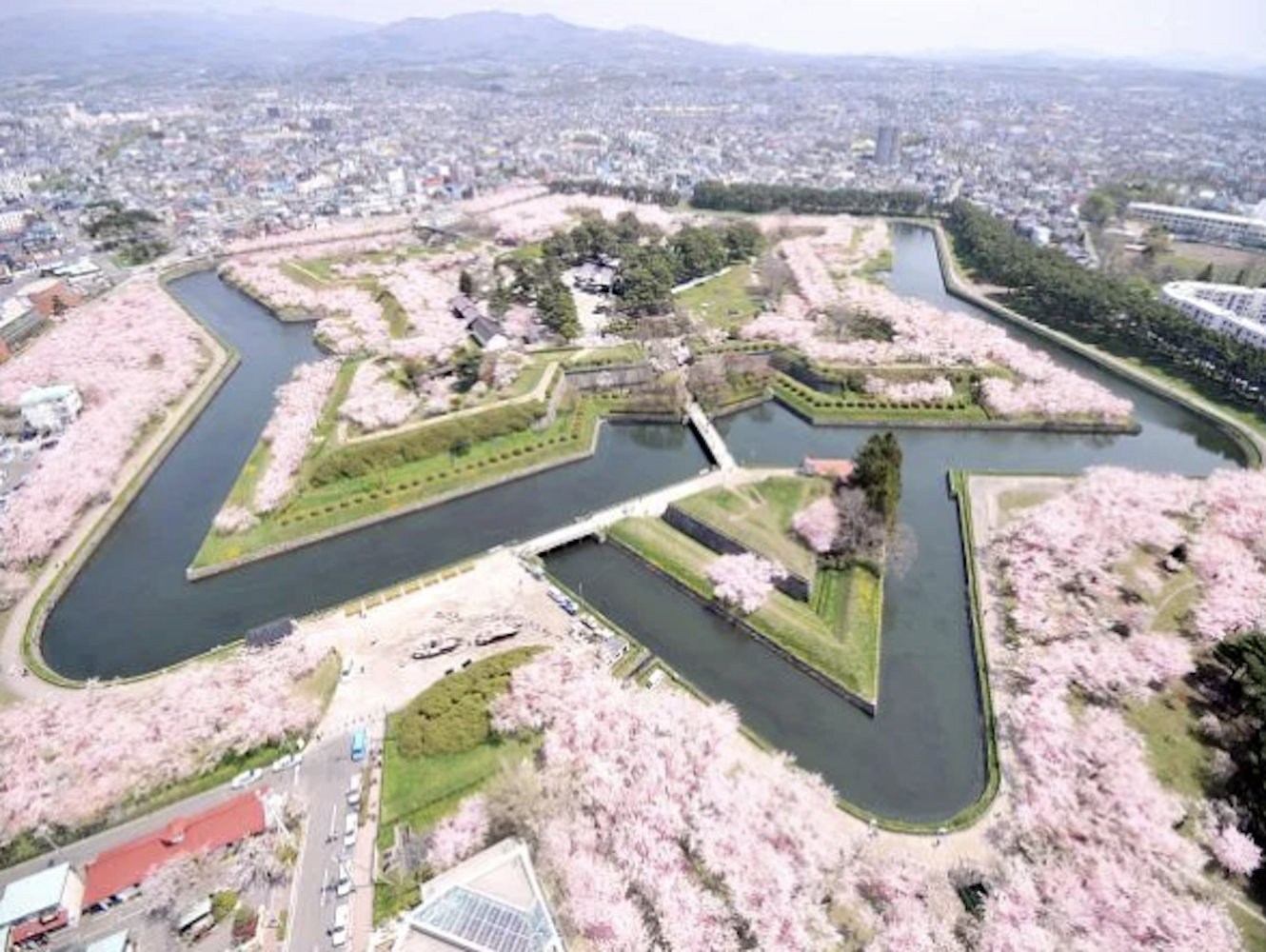
For travelers visiting Japan later in the season, Goryokaku Park in Hakodate, Hokkaido, is one of the last places to see cherry blossoms. This unique, star-shaped fort is surrounded by over 1,500 cherry trees.
From above, the park looks like a sea of pink during peak bloom. Visitors can walk along the pathways, enjoy boat rides in the moat, or go up Goryokaku Tower for a breathtaking aerial view of the blossoms.
During Sakura season, many cities hold cherry blossom festivals featuring food stalls, live performances, and special nighttime illuminations. Some must-visit festivals include:
Hirosaki Cherry Blossom Festival (Hirosaki Park, Aomori) – This festival is one of Japan’s most famous. Hirosaki Park has over 2,500 cherry trees, stunning flower tunnels, and even petal-covered moats. Visitors can enjoy boat rides, delicious food stalls, and stunning nighttime illuminations.
Ueno Sakura Matsuri (Ueno Park, Tokyo) – Ueno Park is one of Tokyo’s busiest sakura spots, and during the festival, it is filled with people enjoying hanami parties, street food, and traditional music performances.
Takato Castle Ruins Park Festival (Nagano) – Takato Castle Ruins Park is known for its unique pink-colored cherry blossoms. The festival features food vendors, cultural performances, and a breathtaking illuminated night view.
Kumamoto Castle Sakura Festival (Kyushu) – The combination of historic Kumamoto Castle and blooming cherry trees creates a spectacular sight. The festival includes parades, local food stalls, and special events for visitors.
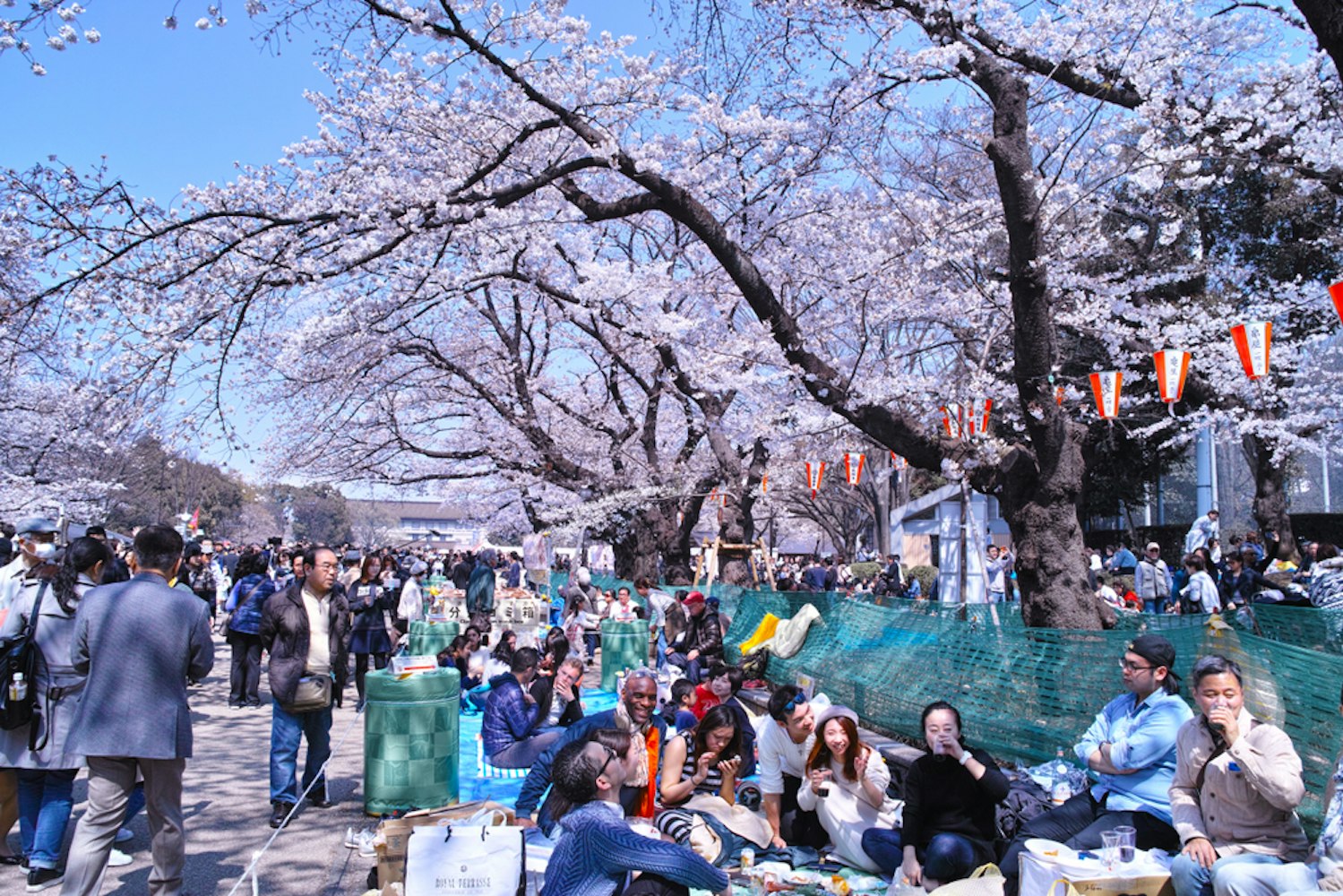
Hanami means "flower viewing," and it is a traditional Japanese custom. Families, friends, and coworkers gather in parks to enjoy picnics under cherry trees. If you want to experience hanami, bring a picnic mat, food, and drinks. Arrive early because popular spots get crowded.
Many parks light up the cherry blossoms at night, creating a magical atmosphere. Some of the best places for nighttime sakura viewing include:
Maruyama Park in Kyoto
Ueno Park in Tokyo
Osaka Castle Park
During spring, Japan offers special sakura-flavored foods and drinks. Some must-try items include:
Sakura mochi: A sweet rice cake wrapped in a cherry leaf.
Sakura latte: A pink-colored drink with a mild cherry blossom flavor.
Sakura beer: A seasonal drink with a floral taste.
Sakura ice cream: A delicious treat with a light sakura scent.
Many cities in Japan host sakura festivals with food stalls, performances, and special events. Some popular festivals include:
Hirosaki Cherry Blossom Festival (Aomori): Held in Hirosaki Park, home to over 2,500 cherry trees.
Takato Castle Ruins Park Festival (Nagano): Famous for its 1,500 beautiful cherry trees.
Himeji Castle Cherry Blossom Festival (Hyogo): A stunning view of sakura surrounding Japan’s most famous castle.
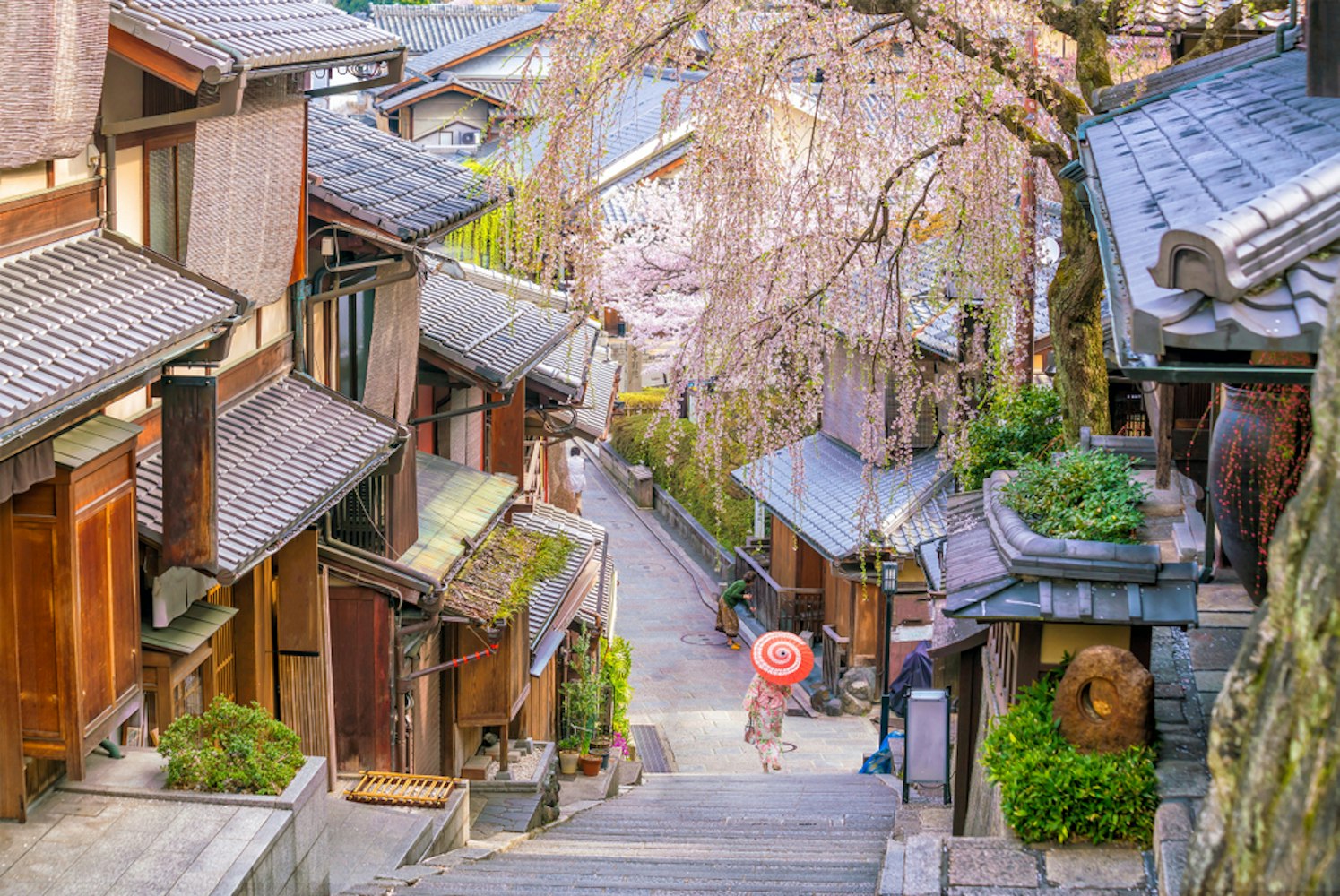
Book Hotels Early: Spring is one of Japan’s busiest travel seasons. Hotels fill up quickly, so book in advance.
Use Public Transportation: Trains and buses are the best ways to travel between cherry blossom spots.
Respect Nature: Do not pick cherry blossoms or damage the trees.
Follow Local Rules: Some parks have restrictions on alcohol and loud music.
Check the Weather: Rain can affect cherry blossom viewing, so check the forecast before going out.
Spring weather in Japan can be unpredictable, so it's essential to dress in layers. Early March may still feel like winter, with afternoon temperatures reaching only around 10°C, so packing a thick coat or jacket is advisable.
As the season progresses, particularly from mid-April to early May, lighter clothing such as sweaters and light jackets is more appropriate. It's also worth noting that temperatures drop in the evenings, so having a scarf or an extra layer is functional.
Bring a picnic blanket and comfortable walking shoes to explore parks if you plan to enjoy hanami outdoors.
Springtime in Japan offers an exquisite blend of natural beauty and deep-rooted cultural traditions. Whether you enjoy cherry blossom viewing at famous spots, attending colorful festivals, or indulging in delicious seasonal food, Japan's spring season offers many unforgettable experiences.
With the right timing, insider tips, and an appreciation for Japanese culture, your spring trip to Japan will be remembered. So pack your bags, check the cherry blossom forecast, and prepare to witness the magic of spring in Japan.



